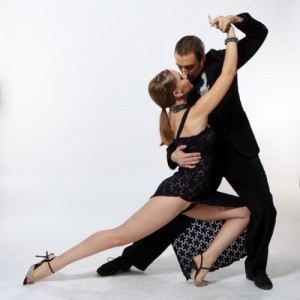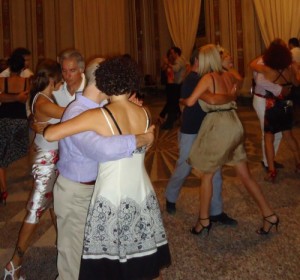Improve your social competence by learning how to dance Argentine Tango
If you don´t know anything about Argentine Tango apart of the tons of clichés which many people have in their minds, you really might ask yourself “What the heck is that guy talking about?”
Just give me a minute and I will explain.
Maybe you know Argentine Tango only from movies where obscure figures on dim lighted dance floors do strange movements, chewing wagon loads of roses. Maybe you made up your judgement about Argentine Tango having seen ballroom dance competitions, frozen smiles, rigid moves, heads twisting unnaturally with every movement…
Could be you went to an Argentine Tango Show, spectacular, technically brillant sensual and maybe most impressive.

Argentine Tango can be spectacular. Yet you can also improve your social competence by learning how to dance Argentine Tango
Yet, what has all this to do with social competence?
To answer this questions we have to go back to the origins of Argentine Tango.
Argentine Tango or maybe better Tango from the Rio de la Plata, started in Buenos Aires and Montevideo at the end of the 19th century. Immigrants from all over the world came to the Rio della Plata hoping for a better live. At the same time native Argentineans from the countryside came to Buenos Aires and Montevideo as well. They had lost their jobs on the big haciendas, the kingdom size cattle farms, and were trying to find work in the big cities. As both groups competed for jobs, housing and often mere survival tensions were inevitable. On the other hand the clash of the cultures was the cradle of one of the most successful music styles and dances, the Argentine Tango.
Argentine Tango in its beginning was (and still is) a social dance, at that time danced mainly by the ordinary people, craftsmen, workers, small merchants…
Argentine Tango was danced a little differently in the different quarters but in order to dance together all the dancers had to agree upon one common code.
One crucial part of this code, which is still valid among real good Argentine Tango dancers, was the respect for each other.

Argentine Tango is a social dance. Real Argentine Tango dancers respect each other on the dance floor.
Though of course there have been always more and less talented dancers, the most important thing among milongueros (the Argentine name for Tango dancers) was by no means showing off, demonstrating what a hell of a dancer somebody was.
More important by far was to dance Argentine Tango together in harmony in the “ronda” the round of all the dancers. No one would intentionally dare to disturb the dance of the others, let alone kicking or pushing them. If you wanted to be a great dancer you had to find strategies to dance better while remaining in the harmony of the “ronda”.
Argentine Tango dancers had to develop the mindset to move on with the flow of the music, in harmony with everybody else, instead of fighting each other for every little patch of the dance floor. Given the fact that dancing Argentine Tango was not simply a pastime but a complete lifestyle this meant in consequence that they developed strong social competence. One aspect we certainly can learn from.

Pingback: Argentine Tango Can Improve Social Competence